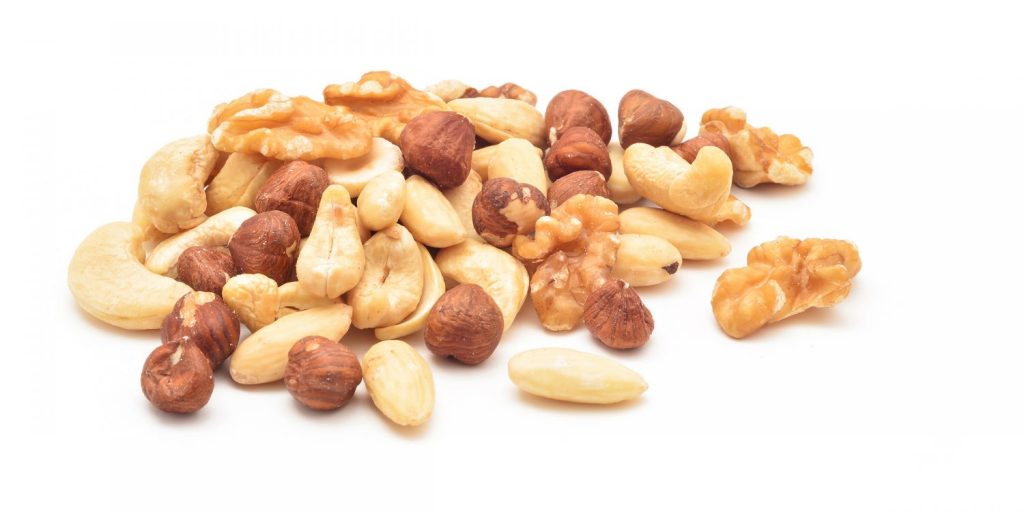Vitamin Guide A to K
Our bodies need vitamins to survive and function properly. These aren’t the vitamins you buy from the pharmacy, the gummies you take every morning, or the pills found in the health aisles of your local market. These are natural substances or molecules that your body absolutely needs to maintain your health.
Vitamins can be broken down by name and where they play a role in the body. They have multiple functions in aiding our energy, DNA, skin, organs, and pretty much anything else you can think of that involves the human boy.
There’s quite a long list of vitamins so below we’ve included the major details of vitamin essentials. We will take a look at how they work in the body and where you can find them. Let’s get to the breakdown of the what, where, and why of vitamins.
Vitamins: The Basics
What is a vitamin? Basically, a vitamin is “a substance that makes your body function properly.” The “vita” in vitamin is actually short for vital because they’re vital for your health and body. To break this down even further, vital means absolutely necessary. In other words, vitamins are without a doubt required for proper bodily functioning and good health.
Not only are vitamins a basic necessity for your health, but minerals too. The question often asked is what’s the difference between a vitamin and mineral?
Vitamins are substances that contain the element Carbon (organic compounds). They act as aids to our body by helping our body’s cells undergo chemical reactions. They don’t provide energy the way carbohydrates (carbs and sugars) do, and they aren’t part of building proteins or fats either.
Vitamins are coenzymes (parts of enzymes that are non-protein), meaning they’re responsible for helping our body undergo chemical reactions. Our bodies are made up of cells which are the smallest functional units of life. These cells are full of constant chemical reactions which require specific tools and machinery. The structure or build of the cell makes up the required machinery, while vitamins act as the required tools.
If our body doesn’t have enough vitamins, the cells in our body can’t complete the necessary chemical reactions efficiently or even at all. This throws off the total of all chemical reactions occurring in the body, leading to poor maintenance of health.
Knowing now that vitamins are essential for life, one would think that the knowledge of vitamins is widespread. However, this isn’t the case. For a very long time, vitamins were unknown to many.
Years ago sailors made the connection that some forms of citrus could ward off certain illnesses. Although they didn’t know why citrus was beneficial, researchers wanted to figure out the explanation. In their findings, they found that the lack of certain substances could result in health problems. After further research, it was found that certain substances were essential to certain areas of the body. Eventually, a map was drawn out laying out all of the substances and cells that worked together.
Every time a new vitamin was discovered, it was given a letter. These letters go from “A” to “F” (skipping some letters), and end at “K.” After years of research and experimentation, we now know the amount of which vitamins are needed to maintain good health.
We now know the benefits of each vitamin and where each of them play a major role in our bodies. Using this knowledge, we can form the best course of action to follow regarding what diets and supplements we should take part in.
Two Major Groups of Vitamins
Vitamins can be categorized into two separate major groups. The first group of vitamins are known as water-soluble and the second group are fat-soluble. They are broken down into these two groups based on how they are absorbed and stored in the body.
The water-soluble vitamins include vitamins C and B. They are called water-soluble because they can be absorbed or taken into the body with a little assistance from water. Water-soluble vitamins don’t stay in the body too long and are regulated by the kidney. The kidney manages the levels of these vitamins by deciding whether you have too much or too little of them.
The fat-soluble vitamins include vitamins A, D, E, and K. They are referred to as fat-soluble vitamins because they require fat for absorption and are stored in fat.
Knowing how these different vitamins are absorbed and stored can benefit your health when you take the facts into consideration. You can adjust your meal planning to optimize absorption of these essential vitamins.
Different Vitamins
Vitamin A
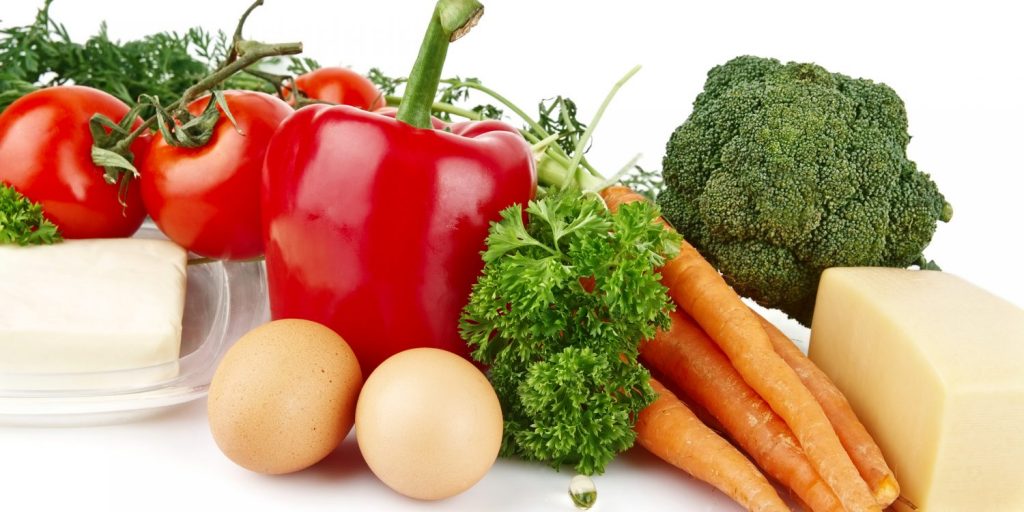
Vitamin A is a fat-soluble vitamin in forms of retinol, retinal, and retinoic acid. It isn’t a single molecule, but multiple molecules working together to promote health. This complexity of the vitamin provides it with a wide range of health benefits.
Vitamin A is packed full of antioxidants. These antioxidants combat and provide protection against free radicals which are unstable electrons in the body. Combating these free radicals with antioxidants provides protection against illness and aging.
This vitamin can also be converted into different forms that can also benefit the body. These new forms aid your cells in growing, communicating, and differentiating for different jobs in the body. Each part of the body requires different operations done by cells, so your cells must communicate with one another (chemically), as well as specialize themselves for the particular operations.
It has also been shown that vitamin A can promote healthy skin, tissues, function of the immune system, and reproductive health. Vitamin A is also a component of an important protein (rhodopsin) in your eyes that assists with absorbing light, allowing for proper vision.
When you consume vitamin A, you are consuming one or another form of the vitamin. You are consuming either preformed or provitamin A. Preformed vitamin A can be found in meat, dairy, and other animal products. This form of the vitamin can be used immediately after it is consumed by the body. Provitamin A can be found in plant products such as vegetables and fruits. The pigments of these plants are known as carotenoids. Beta-carotene is the most commonly known, which is virtually two vitamin A molecules joined together. These forms can’t be used immediately and must be converted into a useful, active form of the vitamin called retinol.
Regardless of which type of vitamin A you consume, they all have benefits for your body’s immunity, skin, cells, reproductive system, and overall health.
Vitamin B1 (Thiamin)
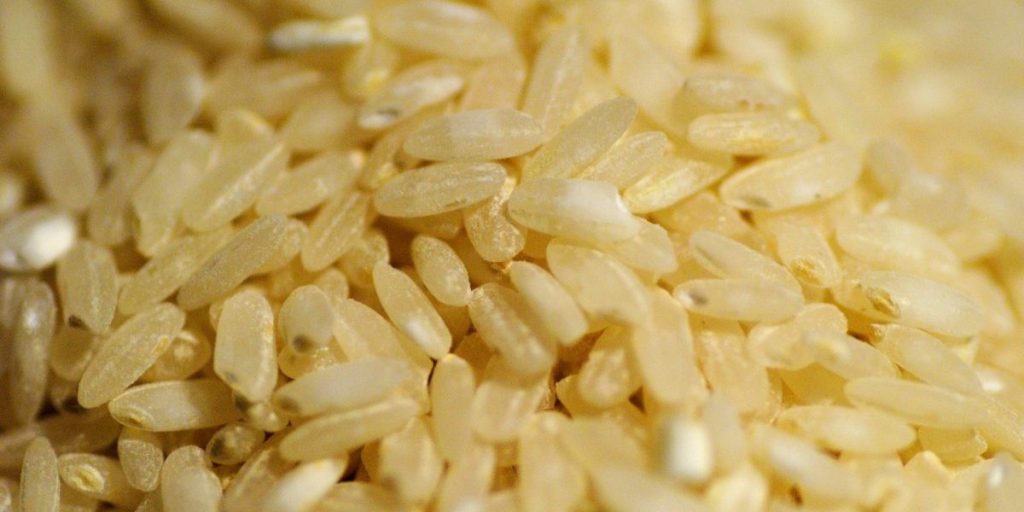
Vitamin B1 is a water-soluble vitamin that assists your body in turning what you consume into usable energy. This action is called energy metabolism.
Just like vitamin A, vitamin B1 also comes in multiple forms. The most important form of vitamin B1 is thiamin diphosphate (two phosphate molecules connected to free thiamin molecules). Like thiamin diphosphate, other configurations of vitamin B1 are made in the intestines. These configurations are coenzymes that help enzymes break down the carbohydrates, proteins, and lipids (fats) that you consume. Eventually this process converts starches, sugars, amino acids, and fats into usable energy.
Along with facilitating energy metabolism, vitamin B1 plays a role in cellular sugar production which contributes to the synthesis of RNA and DNA. It can be found in grains, legumes, as well as some meats. Most people consume enough vitamin B1 in their regular diet, however vitamin B1 deficiency can occur. In this case thiamine vitamins can be used to supplement the deficiency.
This vitamin is extremely important for your body and is stored in the liver. The liver processes this vitamin very quickly however, so it is vital to make sure your amount of vitamin B1 consumption is efficient.
Vitamin B2 (Riboflavin)
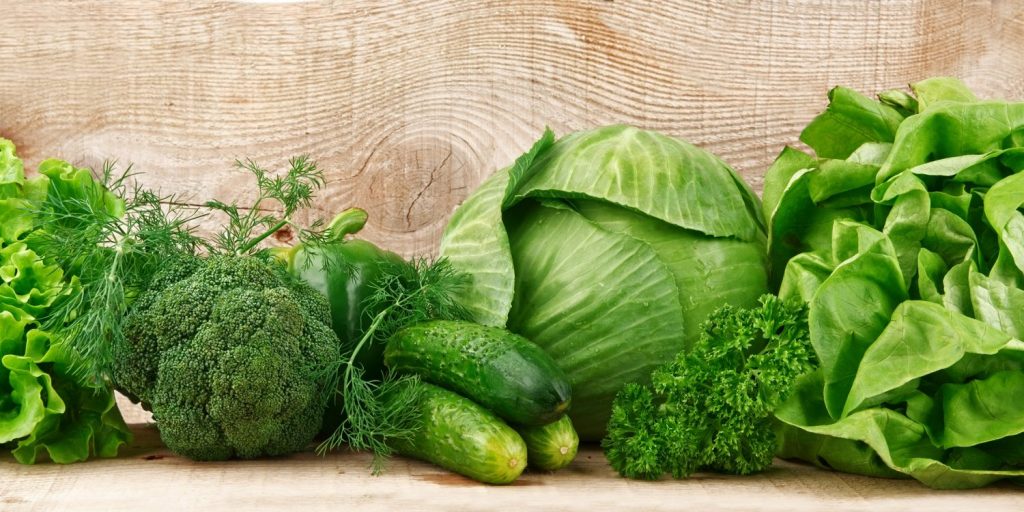
Vitamin B2 or riboflavin also acts on the body’s energy processing mechanisms. It acts as a coenzyme responsible for catalyzing reduction/oxidation (redox) reactions. Vitamin B2 moves the electrons around between different molecules in chemical reactions.
Molecules with extra electrons are required in redox reactions. Just as the electron transfer mechanism is at use for antioxidants and free radicals, it is at use here as well. The only difference is that the mechanism with vitamin B2 is used for energy.
Two energy catalyzing enzymes known as flavin adenine dinucleotide (FAD) and flavin mononucleotide are responsible for donating electrons in reactions. With the help of the coenzyme riboflavin, the body has an ability to produce energy from your diet through these reactions and their donated electrons.
After consuming food, it is broken down into multiple components. This is done by breaking down chemical bonds in the food. When these chemical bonds are broken, electrons are released. Riboflavin then captures these electrons and obtains all of the energy in them so your body can use it.
Along with metabolizing amino acids, glucose, and fatty acids, riboflavin also metabolizes drugs and steroids consumed. It can even convert tryptophan into niacin.
Riboflavin like the other B vitamins have opportunities for deficiency. This is most common in alcoholics, pregnant women, and athletes. However, there is no oral toxicity found in consuming too much riboflavin and it can be found in a wide range of different diets. This includes brown rice, pork, and squash.
Vitamin B3 (Niacin)
Vitamin B3 (niacin) is a water-soluble vitamin and is also essential for the production of energy. It works by converting the food you consume into energy that your cells use to function properly.
Vitamin B3 is part of two coenzymes called nicotinamide adenine dinucleotide (NAD) and nicotinamide adenine dinucleotide phosphate (NADP). Just as the enzymes are used with riboflavin, NAD and NADP also transfer electrons in redox reactions. This is especially true in the breakdown of macronutrients. So, these electron transfers provide energy that your body can then use.
Not only does niacin contribute to energy processing, but it also supports healthy skin, nervous system, brain, and digestive system. A niacin deficiency can lead to pellagra, which is why it is important to include it in your diet. Niacin can be found in both plant and animal products with an emphasis on chicken, leafy greens, corn, wheat, and fish. Keep in mind that niacin is non-toxic if you consume less than 50 mg per day.
Vitamin B5 (Pantothenic Acid)
Vitamin B5, also known as pantothenic acid is a water-soluble vitamin also necessary for the proper production of energy. It is absolutely essential for all mammals because it is an important precursor for coenzyme A, which can be found in the body’s powerhouse.
This powerhouse is called cellular mitochondria, and is where there is an abundance of chemical cycles that are always occurring. Vitamin B5 is a part of coenzyme A so it can also be found in the mitochondria. This configuration of vitamin B5 and coenzyme A work in order to produce energy from the carbohydrates, fats, and proteins that we consume. There are multiple cycles that take place in order to accomplish this, but the Krebs cycle will show you how vitamin B5 and coenzyme A are involved.
Coenzyme A is also responsible for a lot of other bodily functions. It needs to be available for the synthesis of cholesterol, vitamin A, vitamin D, and hormones. The vitamin and coenzyme are also present in the liver in order to break down toxins.
Vitamin B5 can be found easily in a regular diet, but it is mainly found in organ meats, avocados, milk, broccoli, and some seeds. There is no known toxicity to be reported in humans so overconsumption is not an issue.
Vitamin B6
Vitamin B6 is another water-soluble vitamin that is essential for a wide range of bodily functions. It is involved in at least 100 reactions to be more precise. Because it is involved in so many reactions, it also had a wide range of forms.
These forms of vitamin B6 help synthesize coenzymes that eventually contribute to the breakdown or metabolism of amino acids and proteins. The coenzymes are responsible for breaking down amino acids, removing the carbon atom groups, and much more.
This bodily process is necessary for all cells, and it results in a large number of different impacts on the body. These include transforming glycogen (large, stored sugar molecule) into glucose (smaller sugar molecule) so that it can be used as energy, supporting immune cells, regulating hormones, metabolizing fat, synthesis of neurotransmitters, and regulating blood levels of the amino acid homocysteine (important for cardiovascular health).
Vitamin B6 is a very complex vitamin that is vital for proper health. It also requires activation due to the complexity of the vitamin in its many forms. Vitamin B6 needs to be consumed along with riboflavin, niacin, and zinc in order for it to be activated. It is extremely important to balance all of these B vitamins with zinc through either food or dietary supplements. Vitamin B6 can be found naturally in beans, bananas, potatoes, meat, and nuts. There is a chance for adverse side effects when too much is consumed, so it is advised to keep consumption below 100 mg per day.
Vitamin B7 (Biotin)
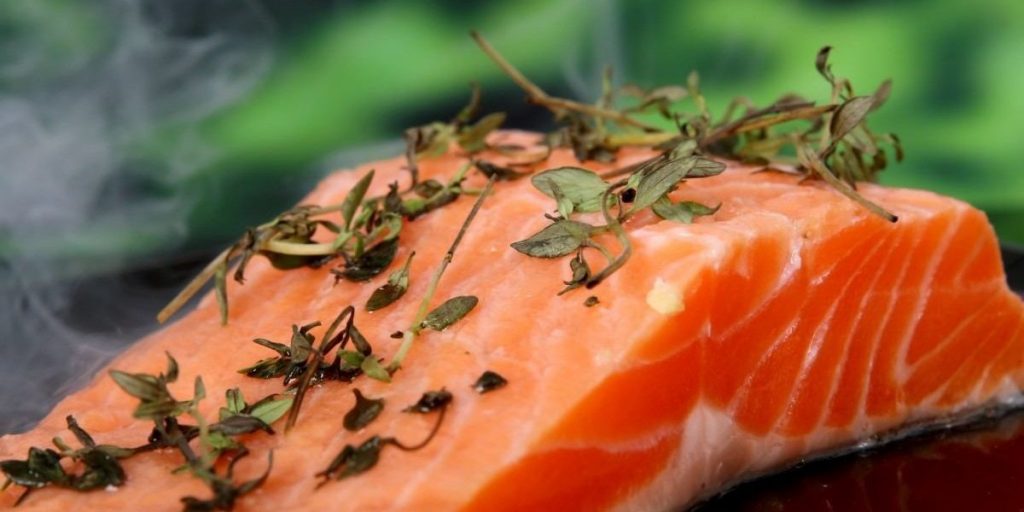
Vitamin B7 is a water-soluble vitamin referred to as biotin. Biotin contains sulfur and has a lot of benefits and uses in the body.
As mentioned above, glucose is a sugar molecule that can be used immediately for energy and usually comes from ingested carbohydrates. Unlike vitamin B6, vitamin B7 doesn’t use carbohydrates and glucose for energy, but fats and proteins.
Vitamin B7 also assists the body with gene expression and organization. It influences proteins that aid in reading DNA codes for the cell, which are also known as transcription factors. It also helps gene organization by modifying specific proteins in the cell’s nucleus (control center of the cell). This organizes and packages DNA which also influences gene regulation.
Not only does biotin work invisibly, but visibly as well. Biotin aides the growth of healthy skin, hair, nails, and eyes.
Vitamin B7 can be found in a wide range of foods, but specifically in fish, whole grains, yeast, avocado, and liver. Biotin is found in an abundance in healthy diets and is easily absorbed due to the bacteria in our intestines. It is unknown how much vitamin B7 we absorb, but we do know that there are no known toxic reactions. The only thing to remember about taking supplemental biotin is that it may interfere with certain lab tests. Because of the interference, it should be mentioned to your physician if you are taking any high doses or supplements containing vitamin B7.
Vitamin B9 (Folate)
Vitamin B9 is a water-soluble vitamin that is also referred to as folate. It has high significance in pregnancy due to its functionality with building DNA and other genetic material. It also plays a significant role in cell division/replication. Because of this, we can see how consuming folate is important for pregnant women with rapidly growing fetuses.
Vitamin B9 functions in DNA and cell replication are important throughout the entire life cycle of the body. From before birth up until death, we have cells replicating and dividing. Folate also has a connection with coenzymes in regards to metabolism. Folate assists coenzymes with regulating cellular metabolism and its cycles. It is also important for your red blood cells and immune cells.
Folate also plays a role in having a healthy cardiovascular system. Folate is responsible for transforming the amino acid homocysteine to methionine. If folate isn’t available to turn homocysteine into methionine, your body will have too much homocysteine. Higher levels of homocysteine can put your cardiovascular system at risk.
You can find folate in legumes, enriched grains, asparagus, broccoli, and spinach. Because rapid growth occurs during pregnancy for the woman and the fetus, folate requirements for the body increase. A normal adult should consume around 400 mcg of folate, while a pregnant woman should consume around 600 mcg. If there is a folate deficiency during pregnancy, the child may be born with a low weight and an increased risk for neural tube defects. It is recommended that all women of childbearing age consume 600 mcg of folate per day, through diet or supplementation.
Vitamin B12 (Cobalamin)
Vitamin B12 like the other B vitamins are water-soluble. The vitamin also goes by the name cobalamin and is the only vitamin to contain cobalt (a scarce metal not produced naturally by the body).
Vitamin B12 is the most chemically complex vitamin and serves the body in a variety of ways. It helps metabolize folate, synthesize DNA and red blood cells (erythrocytes), maintains mood, and regulates levels of homocysteine to maintain proper health of the heart and brain.
Because vitamin B12 is one of the most complex vitamins, it is also hard to absorb. There are two steps to this process. The important thing to know is that microorganisms, specifically bacteria, are responsible for creating vitamin B12. Because of this, when you consume vitamin B12, it is attached to proteins. So, the first step for your body is to separate the vitamin from the protein. The second step is for your body to reattach the vitamin to different proteins made in your stomach. After these steps, the vitamin B12 can then be absorbed and used for its many functions.
We know that vitamin B12 is only created by bacteria in the gastrointestinal tract of animals, so it is not a surprise that it can only be found in animal products. These animal products include seafood, beef, fish, and eggs.
It is because vitamin B12 is only found in animal products that vegans and vegetarians are more prone to vitamin B12 deficiencies. When this is the case, vitamin B12 supplementation is highly recommended. Although a deficiency is possible, there have been no observable adverse effects when taking the vitamin at any dose.
Vitamin C (Ascorbic Acid)
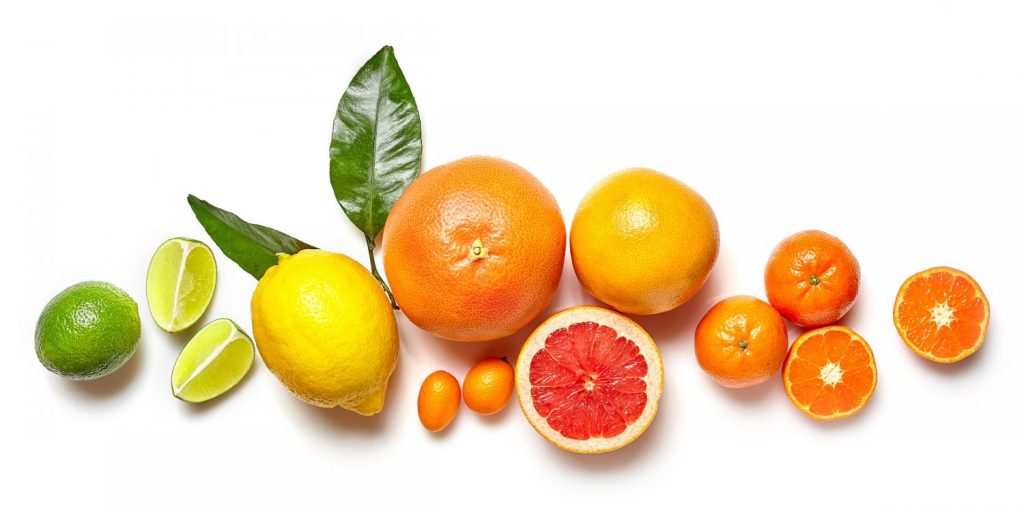
Vitamin C, also known as ascorbic acid, is a water-soluble vitamin just like the B vitamins. It has been studied extensively and may be one of the most well understood nutritional topics as a result.
Just like vitamin A, ascorbic acid is a strong antioxidant. It fights free radicals by donating electrons to neutralize unstable compounds in order to prevent illness or damage. It is a key factor in protecting the cells and maintaining optimal health all throughout the body.
Vitamin C is often found in skin care products and regimens. This is because it can help promote skin cell proliferation, which is the division of cells into more cells. It also supports collagen production in skin tissue, which is the protein responsible for the strength and elasticity of your skin. Ascorbic acid may also benefit wound healing and the appearance of wrinkles.
It’s also not a surprise that people advise consuming drinks containing vitamin C when one is feeling ill. This is because there is sufficient evidence showing the connection between vitamin C and our immune system. Vitamin C promotes the production and synthesis of our immune cells known as leukocytes (a type of white blood cell). These cells are considered our “germ-fighting” cells because they are the cells that attack foreign invaders found in our body. Leukocytes use oxidants to kill and destroy pathogens and must have protection themselves from these reactive molecules. This is where vitamin C also comes into play by protecting the leukocytes from self-inflicted oxidation.
Vitamin C is available in an abundance of citrus fruits, but you can also find it in bell peppers, spinach, kiwi, brussel sprouts, berries, tomatoes, and broccoli. It is always good to supplement for a lack of vitamin C in your regular diet. However, there is a small chance of toxicity in higher doses which may contribute to gastrointestinal discomfort.
Vitamin D (Calciferol)
Vitamin D is a fat-soluble vitamin sometimes referred to as the “sunshine vitamin.”
There are two major forms of Vitamin D named ergocalciferol (D2) and cholecalciferol (D3). Vitamin D2 is often man-made and added to foods to increase the nutrient content. Vitamin D3 is more widely found naturally in foods, or is manufactured with the assistance of UVB radiation, also known as ultraviolet B radiation. This form of radiation comes from the sun and it has been shown that even as little as 30 minutes of being underneath sunlight can help your body produce decent amounts of vitamin D.
The UVB rays from the sun work by reacting with the vitamin D preform, 7-dehydrocholesterol. This preform exists in the skin’s epidermis, or the outermost layer of the skin. After 7-dehydrocholesterol has been hit by the UVB rays, it is transformed and converted into the pre-activated form of vitamin D, 25-hydroxyvitamin D. Then, the pre-activated form enters the bloodstream where it is transported to the liver and kidneys. Lastly, the liver and kidneys will make sure that the vitamin D is fully activated into its most usable form.
After vitamin D is fully absorbed after transformation, it can be used by the body. One of the primary uses of vitamin D is bone health and maintenance. Vitamin D has the capability of regulating and maintaining the levels of calcium in your blood. The calcium levels are carefully balanced by your parathyroid glands, which secrete specific hormones when calcium levels are too low. This release of hormones will increase the amount of usable vitamin D in the blood.
With an increase in usable vitamin D comes many changes in the body in order to regulate calcium levels. First, it increases the absorption of calcium in the intestines, then it promotes resorption of calcium that is filtered by the kidneys, and lastly, it takes calcium from the bones to replenish the low levels of calcium in the blood.
Along with promoting the reabsorption of calcium from the bones, there is evidence that vitamin D can aid the immune system, promote a good mood, and maintain a healthy blood pressure range.
Because a lot of the vitamin D received comes from the sun, it is common for those who live farther from the equator to experience a deficiency of the vitamin. This is because the atmosphere filters out more UVB when the sun is lower in the sky. To combat vitamin D deficiency, supplementation is recommended. It can also be found in fortified foods like grains and milk, or naturally in fatty fish, egg yolk, and liver.
Vitamin E (Tocopherols and Tocotrienols)
Vitamin E is a fat-soluble vitamin that comes in eight different forms. Unlike the other vitamins that work as coenzymes assisting the function of enzymes, vitamin E works independently.
These vitamins are very powerful antioxidants. When your body breaks down food into energy, free radicals are generated. As previously mentioned, free radicals can contribute to illness, disease, and aging. Vitamins such as vitamin E can neutralize these free radicals and their oxidative capabilities so that they do not cause damage to our bodies.
Vitamin E is also important for a well functioning immune system. It works in alerting or signaling your immune cells and communicating between the cells. Vitamin E can also work for the health of your cardiovascular system as it widens your blood vessels.
Vitamin E can be consumed naturally through foods or taken as a dietary supplement. It may also be added to certain foods. Foods containing vitamin E include nuts, plant oils, green vegetables, blackberries, and broccoli. This vitamin is relatively non-toxic and may be taken in large doses. Therapeutic or beneficial effects can usually be found when consuming 200-800 mg per day.
Vitamin K (Phylloquinone, Menadione)
Vitamin K is a fat-soluble vitamin involved in the body’s ability to create blood clots. It helps synthesize or build proteins that regulate the activity of blood clotting or coagulation. The k comes from the term “koagulation” which is German for coagulation.
Vitamin K also plays a role in bone health. It is important in bone remodeling, which is the replacement of old bone tissue with new tissue. Vitamin K is responsible for assisting calcium to bind to proteins. This is overall, extremely important for maintaining good bone health.
Altogether, there are three forms of vitamin K. K1, which is the first form of vitamin K, can be found in green plants/vegetables and supplements. This first form of vitamin K has no known toxicities for high doses in its natural form. The second form known as K2, is produced by bacteria that live in your intestines. And lastly, the third form of vitamin K is known as K3. This form is a man-made supplement that is used in animal feed.
Although the natural form of vitamin K (K1) has no warnings for toxicity, all forms of vitamin K should be used with caution when taken with blood thinner medications. This is because it can interfere with the ability of the medication to thin blood. It is recommended to speak to your physician before supplementing with vitamin K if you are on blood thinner medication.


